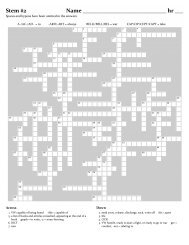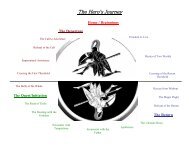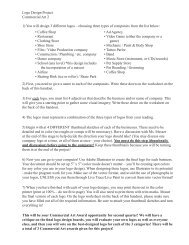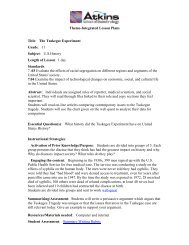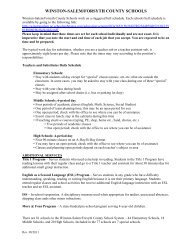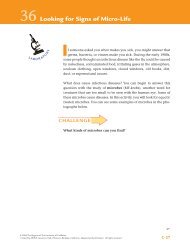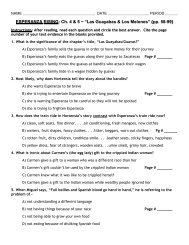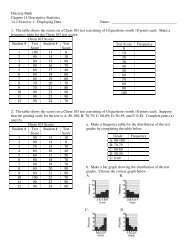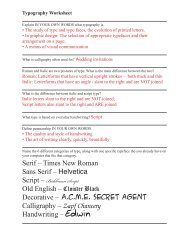World War One
World War One
World War One
- No tags were found...
Create successful ePaper yourself
Turn your PDF publications into a flip-book with our unique Google optimized e-Paper software.
The Russian RevolutionNovember 6, 1917 (October 24 by the Russian calendar) the Bolsheviks seized control of the country,with the help of the military. The Bolshevik’s pronounced themselves Russia’s new leader but theirpractical control had no power beyond Petrograd (Moscow). The country was left in chaos. Manypeople in Russia opposed the Bolsheviks. Some wanted to bring back the Czar, while others favoreddemocracy.The Bolshevik leader Lenin issued his first decree declaring Russia would to be at peace.He ordered the Russian military to cease all hostilities.Nov. 26, 1917, the Bolsheviks issued a call to halt hostilities on all fronts and requested thatall sides immediately make arrangements to sign an armistice. This idea was not wellreceived by France and Britain.When Russia received no response, Russia warned that if no one responded, Russia would make a separate peace.When there was still no response the Bolsheviks published a series of secret treaties that Russia had made with the Allies (toembarrass the Allies).A cease-fire (on the eastern front) was declared on December 15, 1917. The formal treaty took months to negotiate.Russia leaves WWI with the Treaty of Brest-Litovsk, between the Central Powers and Russia (signed March 1918)This treaty had harsh peace terms: Russia gave up Finland, Estonia, Ukraine, Belarus, Lithuania, Poland, and the Caucasusregion along with coal mining in southern Russia (the exact areas Stalin will reclaim in <strong>World</strong> <strong>War</strong> II).The exit from the war cost most of the territorial gains the country had made since Peter the Great (1700s).This agreement posed serious problems for the Allies. It effectively closed the Eastern front and meant the Allies now faced 900,000additional German troops on the Western front. The Germans captured large quantities of Russian equipment which they now usedagainst the Allies. Many argue that Russia pulling out early did not bring the world closer to peace but extended the conflict by enablingGermany and Austria Hungary to focus their entire attention on the West. The United States provided the only possible hope to counterthis sudden turn of the tables.TechnologyTechnological and industrial developments in Europe were advancing with unprecedented speed. Militarytechnology was at the forefront as <strong>World</strong> <strong>War</strong> I became a showcase for new technology that changed thenature, speed, and efficiency of warfare. In WWI the rules of engagement changed. <strong>War</strong> used to meanmajor armies met head-to-head; millions of men on the battlefield. This war was modernized with thetelephone, wireless communication, radio, armored cars, tanks, and aircraft. New smaller infantryformations were reorganized into squads of 10 not 100.Tanks, airplanes, zeppelins (dirigible airships filled with gas), and submarines changed the way wars were fought. Motorized vehiclessuch as trucks, cars, and trains improved the speed for troops and supplies to be deployed and the distance to which they could betransported. Guns of all categories now ranged from pistols to major artillery with greatly improved accuracy and range of fire. Thisenabled armies to fire at each other across long distances, in some cases without even having to see each other. The machine gunmade it possible for a single soldier to effectively take out multiple opponents at once.Vickers machine gun, flamethrowers, Big Bertha (Dicke Berthe), Paris Gun (Paris-Geschutz).Helmets were used to protect from head wounds caused by exploding shells and fragmentation. The French created a steelhelmet (Adrian helmet 1915), the British created the Brodie helmet (1916), the Germans created the Stahlhelm (1916)19



